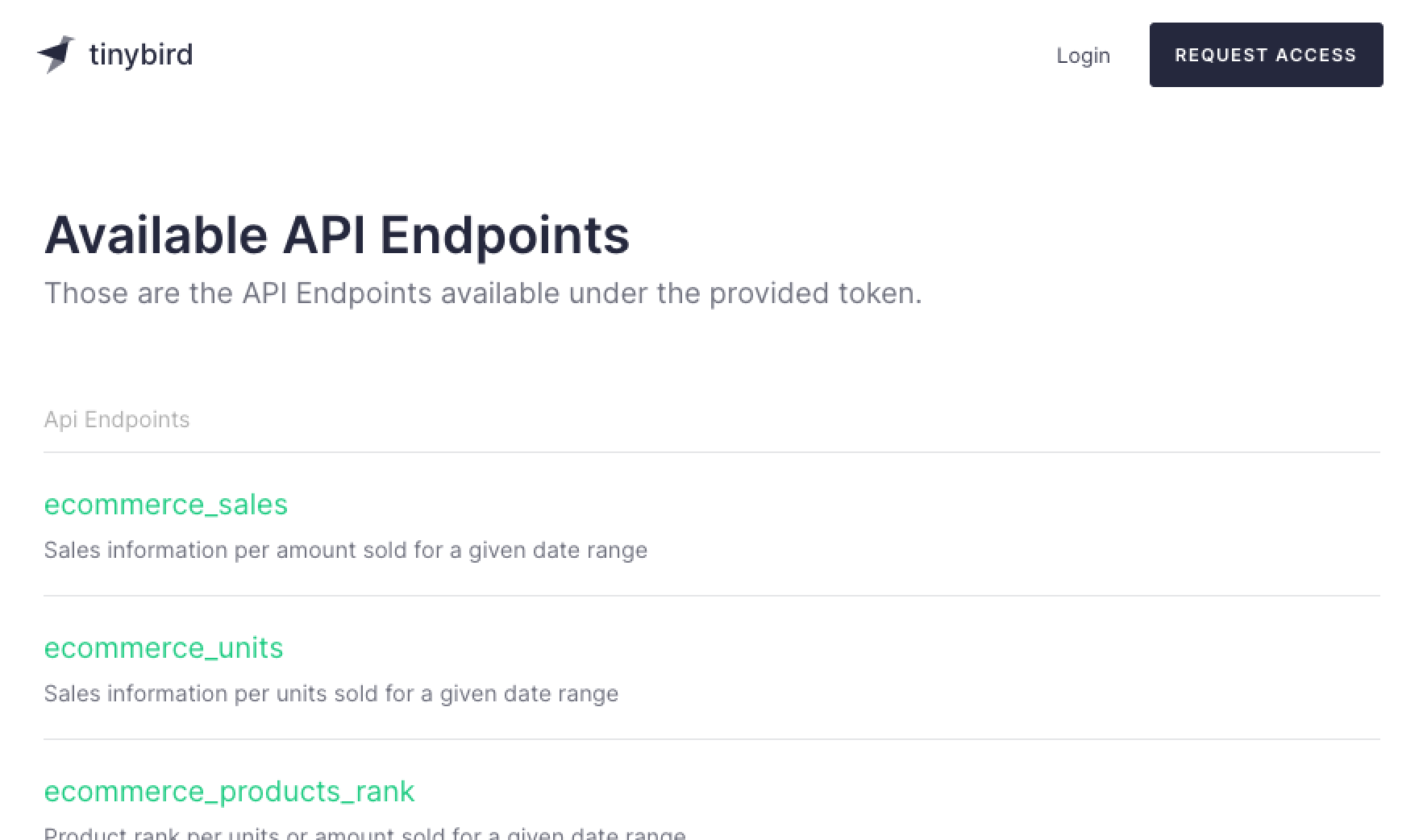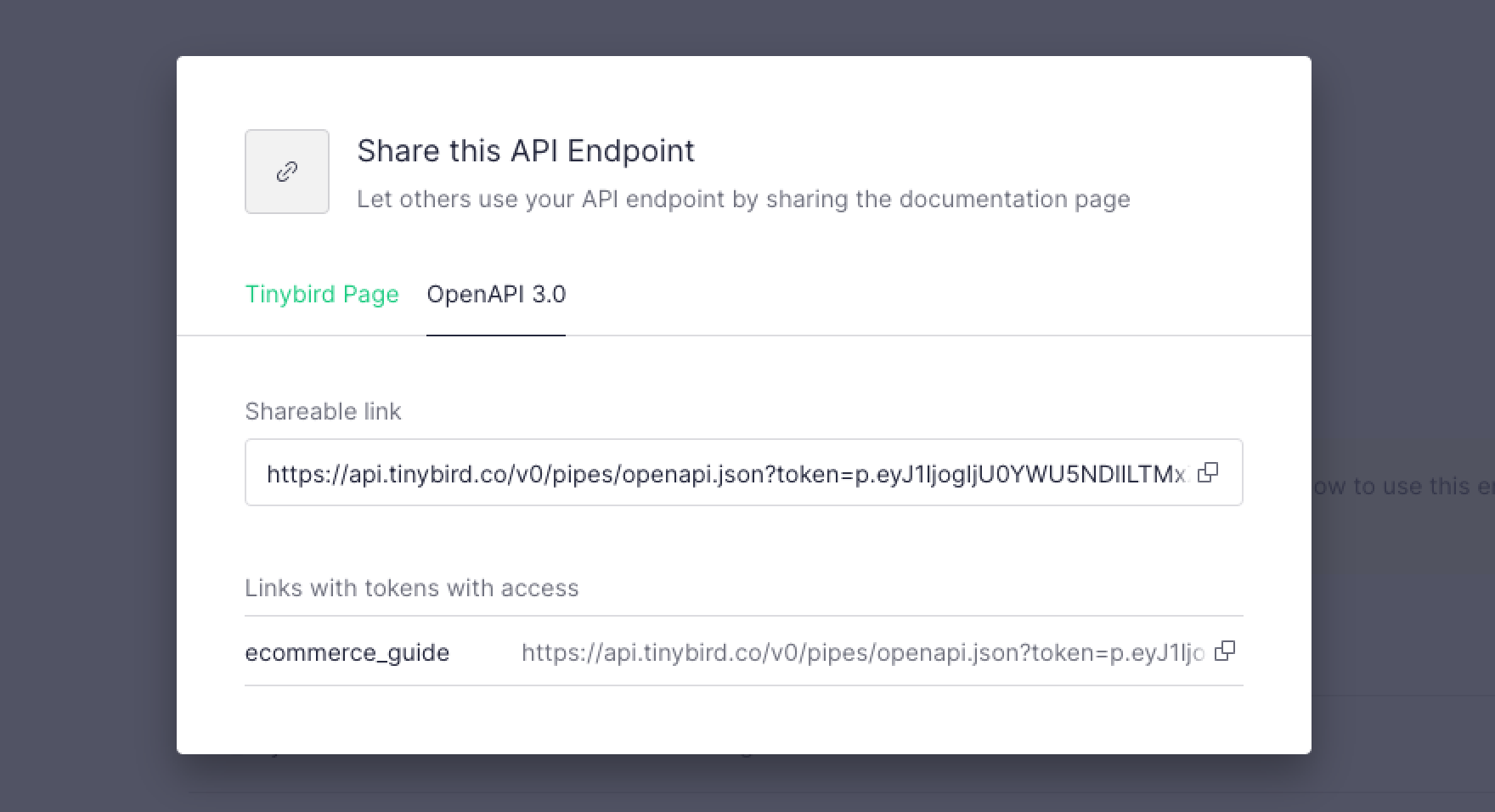Share Tinybird API Endpoint documentation¶
In this guide, you'll learn how to share your Tinybird API Endpoint documentation with development teams.
The Tinybird API Endpoint page¶
When you publish an API Endpoint, Tinybird generates a documentation page for you that is ready to share and OpenAPI-compatible (v3.0). It contains your API Endpoint description, information about the dynamic parameters you can use when querying this Endpoint, and code snippets for quickly integrating your API in 3rd party applications.
To share your published API Endpoint, navigate to the "Create Chart" button (top right of the UI) > "Share this API Endpoint" modal:
Use Static Tokens to define API Endpoint subsets¶
Tinybird authentication is based on Tokens which contain different scopes for specific resources. For example, a Token lets you read from one or many API Endpoints, or get write permissions for a particular Data Source.
If you take a closer look at the URLs generated for sharing a public API Endpoint page, you'll see that after the Endpoint ID, it includes a Token parameter. This means that this page is only accessible if the Token provided in the URL has read permissions for it:
https://api.tinybird.co/endpoint/t_bdcad2252e794c6573e21e7e?token=<token_with_permissions>
For security, Tinybird automatically generates a read-only Token when sharing a public API Endpoint page for the first time. If you don't explicitly use it, your Admin Token won't ever get exposed.
The API Endpoints list page¶
Tinybird also allows you to render the API Endpoints information for a given Token.
https://app.tinybird.co/<provider>/<region>/endpoints?token=<your_token>
Enter the URL above (with your Token and the provider and region where the API Endpoint is published) into the browser, and it'll return a list that shows all API Endpoints that this Token can read from.

When integrating your API Endpoint in your applications it is highly recommend that you manage dedicated Tokens. The easiest way is creating a Token for every application environment, so that you can also track the different requests to your API Endpoints by application, and choose which API Endpoints are accessible for them.
Once you do that, you can share auto-generated documentation with ease, without compromising your data privacy and security.
API Endpoint docs pages include a read Token by default. In the "Share this API Endpoint" modal, you can also see public URLs for every Token with read permissions for your Pipe.
Browse your docs in Swagger 😎¶
As mentioned above, all Tinybird's documentation is compatible with OpenAPI 3.0 and accessible via API. A quick way of generating documentation in Swagger is navigating to the "Create Chart" button > "Share this API Endpoint" modal > "OpenAPI 3.0" tab, copying the "Shareable link" URL, and using it in your preferred Swagger installation.

If you use a Token with permissions for more than one API Endpoint, the Swagger documentation will contain information about all the API Endpoints at once.
Next steps¶
- You've got Endpoints, now make them pretty: Use Tinybird Charts.
- Learn how to monitor and analyze your API performance.